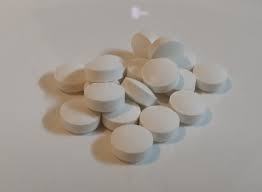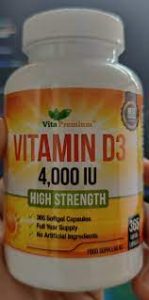Vitamin-d Longevity Vitamin

by R. Johnson
Are you getting an essential level of Vitamin D?
A significant amount of research has been conducted regarding Vitamin D. There are numerous well-known benefits, especially as the vitamin relates to bone health. In addition to this, research also displays the potential for Vitamin D to reduce the risk of developing several cancers.
It also appears to alleviate ailments like muscle weakness, hypertension, multiple sclerosis, and diabetes. Many new studies also show much promise.
Sources of Vitamin D
A significant amount of new research has shown that we in America and Canada would be healthier if we produced more Vitamin D. It is now becoming quite common to hear prominent scientists recommend that individuals check their Vitamin D levels. Many supplements on the market today boost levels of Vitamin C. Many doctors are providing tests to gauge the Vitamin D levels of their patients. Do you think that you should get tested?
We here at the Conscious Evolution Medical Institute can aid you in learning more about the benefits of this simple vitamin. Vitamin D is different from the majority of other vitamins because Vitamin D can be manufactured by skin cells when the skin is exposed to sunlight. The amount of Vitamin D generated depends on factors like time of day, location on earth, season, and skin color (darker skin tones produce less Vitamin D).
Vitamin D production also depends upon the amount of skin exposed to sunlight and the individual's age (less Vitamin D is produced as we age). Because Vitamin D happens to be fat soluble, our body can manufacture it and hold it in storage when it is impossible to get sufficient amounts of sunlight.

Not many foods provide Vitamin D. It is often added to milk, which is the primary way we consume Vitamin D. There are about 100 IU in a cup of milk.
Also, orange juice, soy milk, margarine, and cereals are often fortified with Vitamin D as well. Even so, it is pretty challenging to acquire a sufficient level of Vitamin D only from diet. For this reason, many people take Vitamin D supplements (look below)
Who is most at risk for deficiency?
Many people do not get enough Vitamin D. This is especially true in those older than sixty years old, those living in colder climates, and those staying indoors too much or having very dark skin. In the northern part of the United States and all of Canada, Vitamin D levels drop dramatically in Winter.
During this time, there are fewer hours of daylight, the sun does not shine as brightly, and people keep more of their skin covered when they go outside. Newer research suggests that many younger people are deficient in Vitamin D today. Obesity is tied to Vitamin D deficiency.
Why Is Testing Important?
Scientists who have conducted surveys of data made available from 18 studies that were released by the IMA discovered that people that take Vitamin D supplements of 4-800 IU daily had a significant drop in mortality of around 6%. Harvard Doctor E. Giovannucci penned an editorial in accompaniment to that literature survey claiming a significant potential benefit to taking Vitamin D.
The number of potential benefits the vitamin provides leads him to believe that it behooves anyone to take Vitamin D supplements because there is such a significant upside with such insignificant risk. He feels it is a good doctor's duty to test their patients' levels of 25 hydroxyvitamins D. This is the most straightforward test that can be performed to measure vitamin D levels.
Doctor B. Hollis of the South Carolina Medical University is one of many who advocate for Vitamin D testing. He has conducted research on vitamins for the last thirty years.
Dr. Hollis feels that everyone should be tested for their levels of 25 hydroxyvitamin D because it is a powerful aid in preventing several chronic diseases.
The amount of Vitamin D that is present in a multivitamin (usually 400 IU) or attained from showing the arms and face to sunlight during brief periods during the day will likely not provide enough Vitamin D to properly nourish the blood.
Hollis says that even 800-100 IU supplements each day might not be enough for some. The body's capability to create and properly use Vitamin D depends upon the individual. This is a reason why Vitamin D testing is extremely valuable.
Vitamin D supplements: The quickest and safest way to reach daily requirements
What level of Vitamin C in the blood is most beneficial? Most doctors have agreed that a 25-hydroxyvitamin D level of 30-40 nanograms per milliliter produces the best results in the body. Unfortunately, it is pretty challenging to attain this level of Vitamin D merely through suggested supplements of Vitamin D and moderate sun exposure.
A lot of people that are over sixty years of age have a level of Vitamin D that flags to 20 ng/ml or even less during the winter months. There is considerable debate as to how much Vitamin D provides the most significant benefit in the bloodstream, but Hollis thinks that around 55 ng/ml is a reasonable goal to shoot for.
Exposure of the arms, legs, or entire body to the midday sun (without sunblock) can allow the body to produce an ample supply of Vitamin D (Though even this would be insufficient in the winter in the Northern U.S. And Canada).
However, the significant problem with this method is the increased risk of developing skin cancer. For this reason, Vitamin D supplements are the safest and most helpful way to keep healthy levels of Vitamin C in a way that is not dangerous to the body.
What about the practicality of Vitamin D testing? When you request your doctor to have your levels of Vitamin D analyzed, he may tell you that it is something you do not need to worry about. The blood test costs around one hundred dollars and insurance may not foot the bill unless one has some sort of issue that is exacerbated by a lack of Vitamin D, such as osteoporosis.
sort of issue that is exacerbated by a lack of Vitamin D, such as osteoporosis.
If, after taking this test, it is found that you DO suffer from insufficient levels of Vitamin D, and you take supplements of Vitamin D to fix this problem, it is essential that you take the examination again after beginning a Vitamin D supplement regimen so that you can be sure your Vitamin D levels are in the ideal range.
You should also note that Vitamin D blood levels vary significantly depending upon the season. Early spring and Later winter months correlate significantly with Vitamin D deficiency. Because of this, it might be okay only to take 25 ng/ml in late winter, but it might not be enough in late summer.
The significant thing to remember is that it is not quite time to say that every individual should get tested for Vitamin D deficiency. More significant, long-term studies need to be conducted to justify blanket screenings, and this research has yet to occur.
We here at the Conscious Evolution Medical Institute feel that you should speak with your doctor to discuss whether or not you should be tested. This is doubly so if you are older than 60 or have bone density problems. In any situation, consider taking a supplement of 1000 IF of Vitamin D daily. This should bring Vitamin D levels to a sufficient range of about 30 ng/ml for almost everyone.
Precisely what amount of Vitamin D should you intake?
The Institute of Medicine recommends a dose of at least 200 IU in those individuals that are younger than 50. In people that are 51-70, 400 IU is the recommended dose. In those older than 71, 600 IU is recommended. Most people just do not take in that much Vitamin D unless they take a supplement or drink a whole lot of milk.
Even so, many researchers find that the above guideline should be more liberal. They feel that almost all individuals should aim for 1000 IU daily, especially those over 60 with dark skin. Particular people with significantly low levels of Vitamin D may have to take an even more significant level of Vitamin D.
For this reason, fifteen of the top nutrition experts in the nation made a case to the Institute of Medicine to raise the recommended dose of Vitamin D for all. Simultaneously, The Canadian Cancer Society believes that every adult in Canada should take 1000 IU of Vitamin D every day in the autumn and winter.
 They also believe that the elderly and the dark-skinned should consume that level of Vitamin D all year. This is advice that would benefit most people in the United States as well.
They also believe that the elderly and the dark-skinned should consume that level of Vitamin D all year. This is advice that would benefit most people in the United States as well.
The peak level of Vitamin D that should be ingested daily was established in the past to be 2000 IU daily. It is possible to consume that amount of Vitamin D if a person drinks enough milk and eats other fortified foods and fatty fish while also taking a supplement of Vitamin D and calcium, but it would be difficult.
An American J. of Clinical Nutrition review showed that Vitamin D does not become toxic to the body until over 10,000 IU are consumed daily. We at the Conscious Evolution Medical Institute sure do not wish you to reach that level of Vitamin C overdose, but there is certainly nothing wrong with consuming over 2000 IU of Vitamin D per day.
- Xylitol is a Natural, Plant-Sourced and Low-Calorie Sweetener [Last Updated On: January 8th, 2025] [Originally Added On: January 12th, 2021]
- The Secret Behind Keeping the Weight Off for Good -- No More Losing and Gaining Cycles! [Last Updated On: January 17th, 2025] [Originally Added On: January 13th, 2021]
- The Cognitive Benefits of Starting a CoQ10 (Coenzyme Q10) Supplement Regimen [Last Updated On: January 12th, 2025] [Originally Added On: January 14th, 2021]
- It's Time to Understand Why Vitamin C is Critical for Our Health and Longevity! [Last Updated On: January 10th, 2025] [Originally Added On: January 15th, 2021]
- Snoring is the Most Common Early Symptom of Sleep Apnea -- Do You Suffer From It? [Last Updated On: January 11th, 2025] [Originally Added On: January 16th, 2021]
- Twenty Simple Weight Loss Tips That Can Change Your Life [Last Updated On: January 1st, 2025] [Originally Added On: January 18th, 2021]
- Twelve Ways To Control Cravings [Last Updated On: February 22nd, 2025] [Originally Added On: January 19th, 2021]
- The Truth About The Zone Diet [Last Updated On: January 1st, 2025] [Originally Added On: January 20th, 2021]
- The Truth About The Schwarzbein Principle [Last Updated On: December 31st, 2024] [Originally Added On: January 21st, 2021]
- The Truth About The Realage Diet [Last Updated On: December 31st, 2024] [Originally Added On: January 22nd, 2021]
- The Truth About The Origin Diet [Last Updated On: December 30th, 2024] [Originally Added On: January 23rd, 2021]
- The Truth About The Eat Right, Live Longer Diet -- Nourishing Food Equals Increased Longevity [Last Updated On: January 31st, 2025] [Originally Added On: January 24th, 2021]
- The Essential Roles Magnesium Plays For Our Energy Levels, Skin Youthfulness and Mental Health [Last Updated On: January 4th, 2025] [Originally Added On: January 25th, 2021]
- The Real Skinny On Vitamin B12. What It Can And Cannot Do For You [Last Updated On: March 23rd, 2025] [Originally Added On: January 26th, 2021]
- The Importance And Purpose Of Stress [Last Updated On: February 18th, 2025] [Originally Added On: January 27th, 2021]
- The Ideal Balanced Diet The Reality Of Healthy Eating [Last Updated On: December 30th, 2024] [Originally Added On: January 28th, 2021]
- The Effects Of Cortisol On The Body [Last Updated On: July 28th, 2024] [Originally Added On: January 29th, 2021]
- Sixteen Common Foods That Increase The Cancer Risk [Last Updated On: December 29th, 2024] [Originally Added On: January 30th, 2021]
- Should You Consider Intermittent Fasting? [Last Updated On: November 24th, 2024] [Originally Added On: January 31st, 2021]
- Can Caloric Restriction Help You Lose Weight And Live Longer? [Last Updated On: November 24th, 2024] [Originally Added On: February 1st, 2021]
- How Does Poor Sleep Rob Vitality And Health? [Last Updated On: November 24th, 2024] [Originally Added On: February 2nd, 2021]
- Nine More Natural Ways To Relieve Anxiety [Last Updated On: November 24th, 2024] [Originally Added On: February 3rd, 2021]
- Metabolism Boosting Tips For Losing Weight And Feeling Great [Last Updated On: November 22nd, 2024] [Originally Added On: February 4th, 2021]
- Juicing Pros And Cons [Last Updated On: March 22nd, 2025] [Originally Added On: February 5th, 2021]
- Insomnia Guide [Last Updated On: November 21st, 2024] [Originally Added On: February 6th, 2021]
- How To Lose Weight With Human Growth Hormone [Last Updated On: November 20th, 2024] [Originally Added On: February 7th, 2021]
- How Safe Is Monosodium Glutamate AKA Msg? [Last Updated On: November 23rd, 2024] [Originally Added On: February 8th, 2021]
- How Is Sleep Apnea Diagnosed And Treated [Last Updated On: November 18th, 2024] [Originally Added On: February 9th, 2021]
- Hidden Sources Of Sugar In Common Foods [Last Updated On: November 17th, 2024] [Originally Added On: February 10th, 2021]
- How Would You Like to Potentially Add 14 Healthy and Youthful Years to Your Life Span? [Last Updated On: November 19th, 2024] [Originally Added On: February 11th, 2021]
- Four Reasons Why Healthy Sleep Encourages Weight Loss [Last Updated On: November 16th, 2024] [Originally Added On: February 12th, 2021]
- Omega-3 Fatty Acid Facts And How They Relate To Hormone Replacement Therapy [Last Updated On: July 25th, 2024] [Originally Added On: February 14th, 2021]
- Drink Right To Live Well [Last Updated On: November 15th, 2024] [Originally Added On: February 15th, 2021]
- Consumers Of Processed Meat Put Themselves At Risk [Last Updated On: November 14th, 2024] [Originally Added On: February 16th, 2021]
- Comparing The Same Mass Of Muscle And Fat [Last Updated On: February 19th, 2025] [Originally Added On: February 17th, 2021]
- Watermelon Health Food? The Benefits Of L-citrulline And Watermelon [Last Updated On: November 13th, 2024] [Originally Added On: February 18th, 2021]
- Alcohol Appears To Impact Sperm Quality [Last Updated On: November 12th, 2024] [Originally Added On: February 19th, 2021]
- The Benefits of Selenium - Should You Take a Selenium Supplement? [Last Updated On: February 9th, 2025] [Originally Added On: April 8th, 2021]
- Selenium and its Impact on Your Health and Hormones [Last Updated On: March 3rd, 2025] [Originally Added On: April 8th, 2021]
- Scientifically Proven Benefits Of Turmeric The Indian Spice [Last Updated On: March 18th, 2025] [Originally Added On: April 27th, 2021]
- Natural Remedies for Heartburn or Acid Reflux [Last Updated On: February 18th, 2025] [Originally Added On: May 22nd, 2021]
- What the Heck Is a Raisin, Anyway and Why Would I Want to Eat One? [Last Updated On: August 18th, 2024] [Originally Added On: June 10th, 2021]
- Fat-Focused Diet May Help Boost Testosterone [Last Updated On: February 17th, 2025] [Originally Added On: June 10th, 2021]
- Chia Seeds: More Than Just a Fad [Last Updated On: July 12th, 2024] [Originally Added On: June 24th, 2021]
- Intermittent Fasting Boosts Growth Hormone, and Improves Cognitive Health [Last Updated On: March 4th, 2025] [Originally Added On: May 2nd, 2022]
- Growth Hormone, Nutrition, and Diet Affect Longevity [Last Updated On: February 14th, 2025] [Originally Added On: May 6th, 2022]
- How Your Health is Affected by Brown and White Fat [Last Updated On: February 14th, 2025] [Originally Added On: May 17th, 2022]
- Tesamorelin Boosts HGH Levels and Burns Belly Fat [Last Updated On: February 14th, 2025] [Originally Added On: May 21st, 2022]
- Build Muscle With Tofu - Don't Fear Soy [Last Updated On: December 29th, 2024] [Originally Added On: July 12th, 2022]
- Balancing HGH Levels with Weekly Sogroya [Last Updated On: December 28th, 2024] [Originally Added On: September 1st, 2022]
- Pecans Are Amazing [Last Updated On: February 19th, 2025] [Originally Added On: November 22nd, 2022]
- The Benefits of Fenugreek [Last Updated On: October 14th, 2024] [Originally Added On: November 24th, 2022]
- The Foods To Eat To Increase Stem Cells [Last Updated On: March 6th, 2025] [Originally Added On: December 7th, 2022]
- The Versatility of Pecans [Last Updated On: February 19th, 2025] [Originally Added On: February 9th, 2025]
- Understanding The Concept: A Pound Of Muscle Vs. A Pound Of Fat [Last Updated On: February 19th, 2025] [Originally Added On: February 11th, 2025]
- The Aging Enigma: Unravelling the Web of Human Growth Hormone Decline [Last Updated On: February 17th, 2025] [Originally Added On: February 12th, 2025]
- Rekindling the Flame: How a Fat-Friendly Diet Can Ignite Testosterone Levels [Last Updated On: February 14th, 2025] [Originally Added On: February 13th, 2025]
- Unlocking Your Inner Fountain of Youth: The Magic Elixir of HGH Injections for Women [Last Updated On: February 17th, 2025] [Originally Added On: February 14th, 2025]
- Effective Strategies for Controlling Cravings [Last Updated On: February 17th, 2025] [Originally Added On: February 17th, 2025]
- Overview of Hormone Replacement Therapy and the Role of Intermittent Fasting [Last Updated On: February 22nd, 2025] [Originally Added On: February 22nd, 2025]
- Understanding the Power of Stem Cells [Last Updated On: February 24th, 2025] [Originally Added On: February 24th, 2025]
- The Role of Selenium in Health and Hormones [Last Updated On: February 26th, 2025] [Originally Added On: February 26th, 2025]
Word Count: 1562







